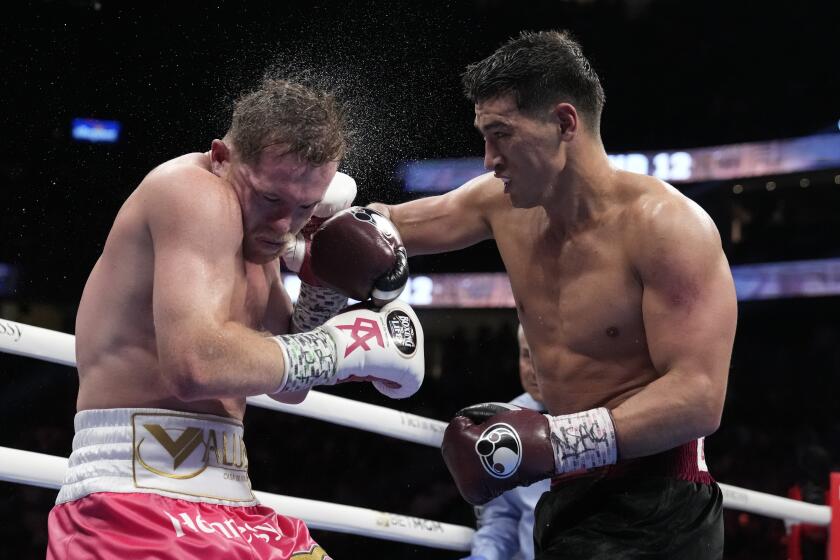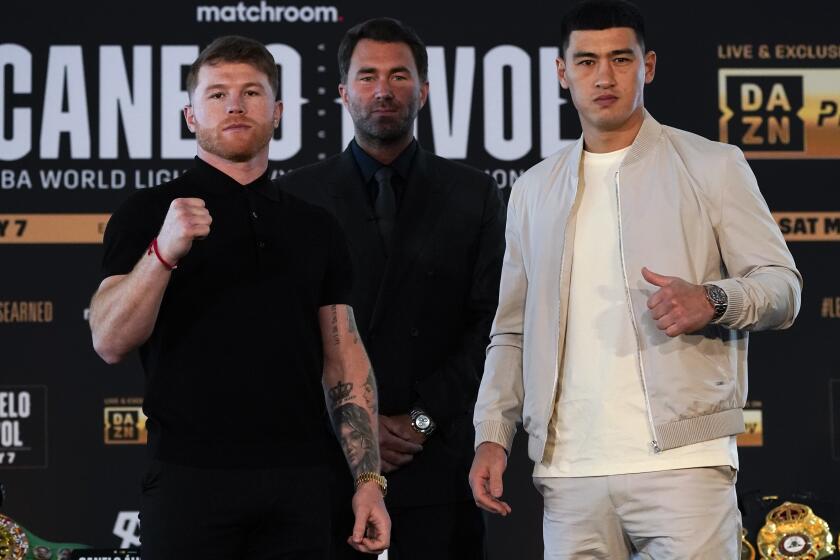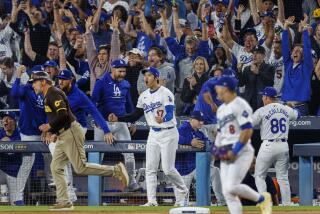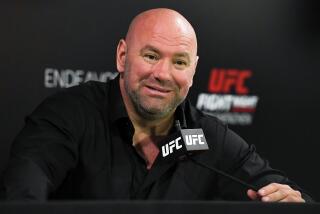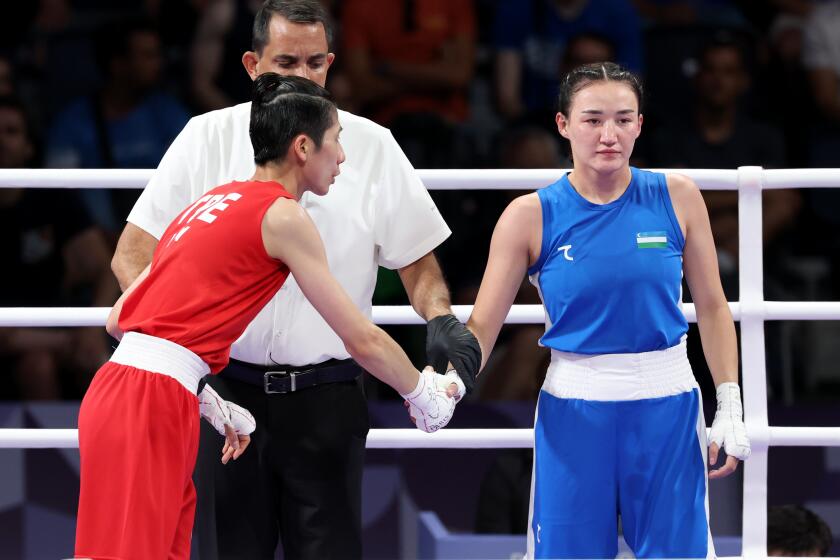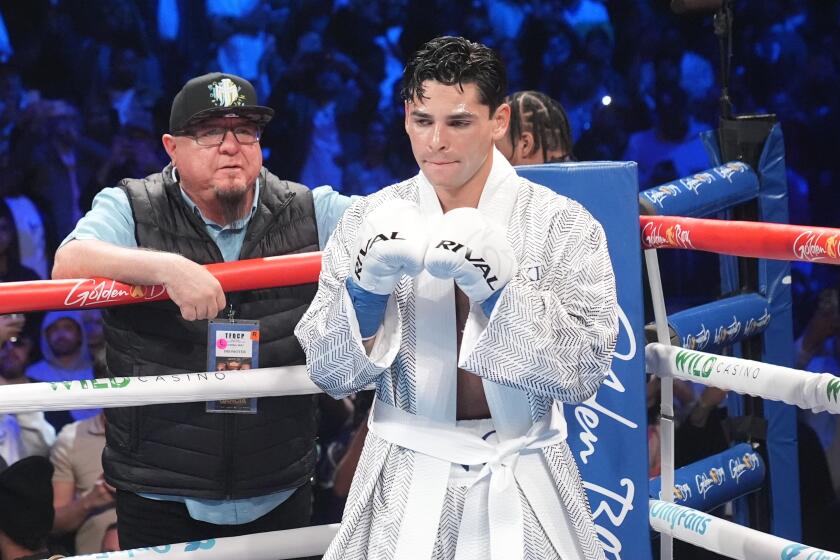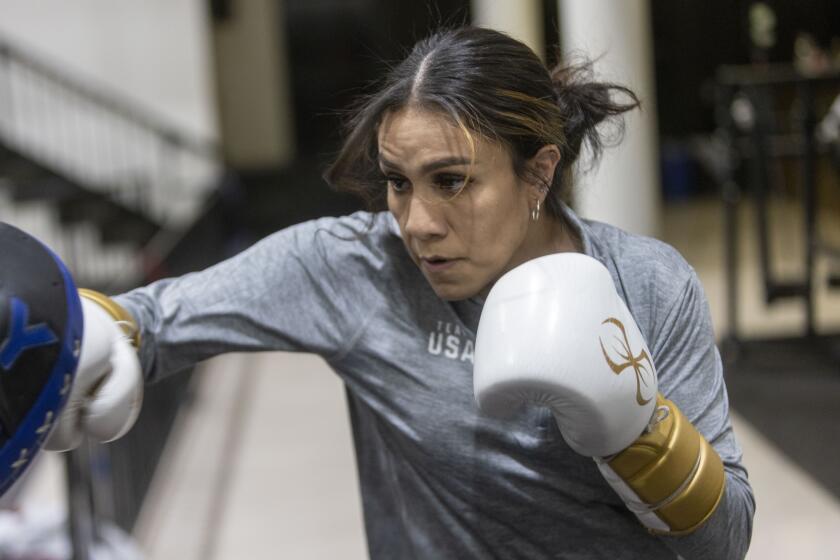Column: In loss to Dmitry Bivol, Canelo Álvarez crossed a line too far. He’s not the first
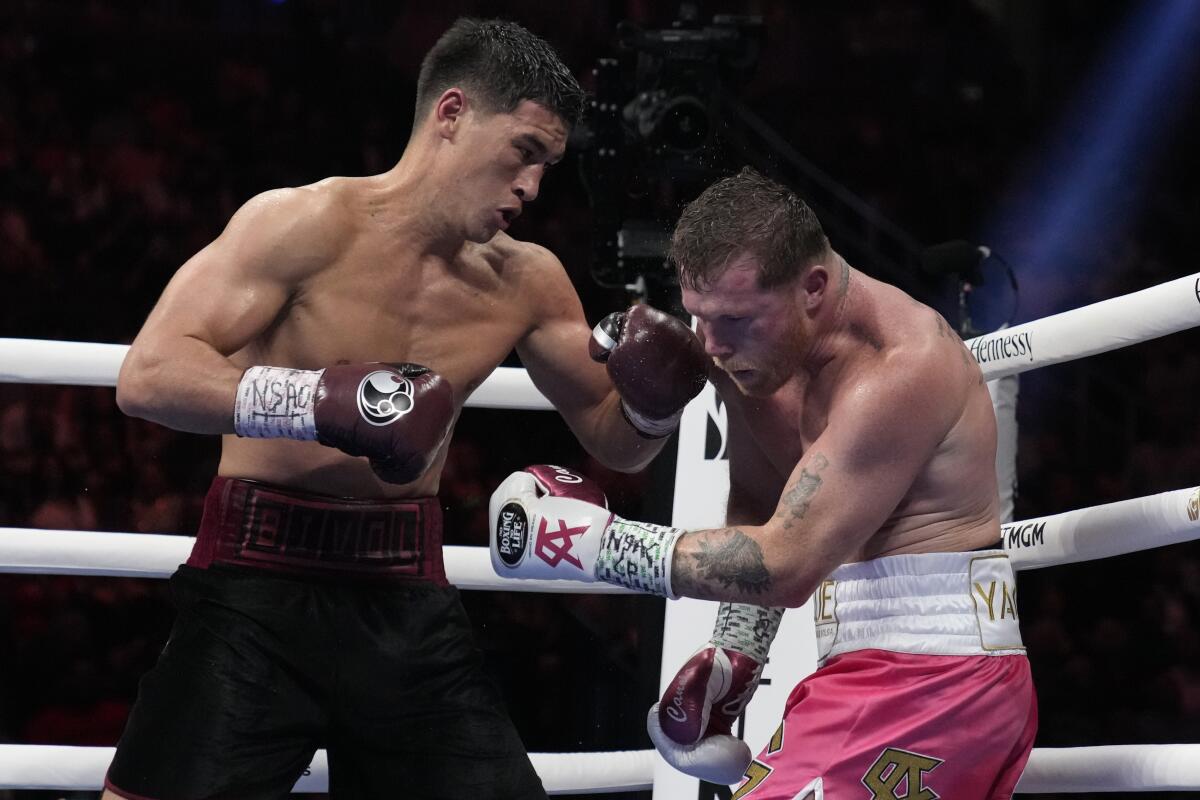
LAS VEGAS — The evidence of the destruction was in the redness of Canelo Álvarez’s head.
More than Álvarez’s trademark hair was crimson. Álvarez’s face was also a shade of canelo — or cinnamon.
Don’t give any credence to Álvarez’s claim that he thought he beat Dmitry Bivol on Saturday night. Ignore the three official scorecards, on which Bivol narrowly edged Álvarez, 115-113. The fight wasn’t close.
Álvarez was blown out.
Bivol deserved to win nine or 10 of the 12 rounds that were contested at T-Mobile Arena, as Alvarez was never able to penetrate his guard, inflict any real damage or avoid any of the sharp incoming punches.
Ultimately, the 31-year-old Álvarez was betrayed by the same quality that made him the signature fighter of his generation: his self-belief.
In moving up a weight class and selecting Bivol as his opponent, Álvarez crossed that invisible line that separates confidence from delusion, courage from hubris.
This is a story as old as boxing itself, the great champion attempting to scale another mountain, only to wind up buried by an avalanche.
It was clear early that Canelo Álvarez could not mount a serious challenge to Dmitry Bivol, who sent the Mexican boxer to his first loss since 2013.
Muhammad Ali was 38 and challenged Larry Holmes. Ray Leonard was washed up and tried to fight Terry Norris. Oscar de la Hoya was a natural welterweight and moved up to middleweight.
Now, it was Álvarez’s turn to fly too close to the sun.
In defense of Álvarez, he wasn’t alone in thinking Bivol was no match for him, even though Álvarez was an undersized 168-pounder and Bivol owned a share of the 175-pound championship.
Álvarez had previously stopped a light heavyweight champion in Sergey Kovalev. Plus, Bivol had no resume to speak of. Bivol’s signature victory was over someone named Joe Smith Jr., who, incidentally, owed his fame to a moment of arrogance by another champion. (Smith was a part-time laborer who knocked a 51-year-old Bernard Hopkins out of the ring in Hopkins’ farewell fight.)
Álvarez offered lip service about the kind of challenge Bivol would present him but clearly didn’t mean it. Álvarez already had his next opponent lined up in Gennady Golovkin, against whom he went 1-0-1 in two close fights.
Someone should have watched more tape of Bivol, starting with Álvarez’s trainer Eddy Reynoso.
Team Álvarez’s excessive confidence was visible in how Álvarez attacked. Álvarez was flat-footed and advanced in straight lines. A similar approach resulted in complications against Billy Joe Saunders last year, but Álvarez was nonetheless able to stop the English super middleweight in eight rounds.
Álvarez was troubled by Bivol’s unspectacular but steady movement, which kept him from setting his feet and throwing combinations. Whatever punches Álvarez threw were blocked by Bivol’s arms, but Álvarez didn’t make any adjustments. He probably figured he could wear down his opponent and eventually force him to drop his arms, as, say, Caleb Plant did.
That never happened.
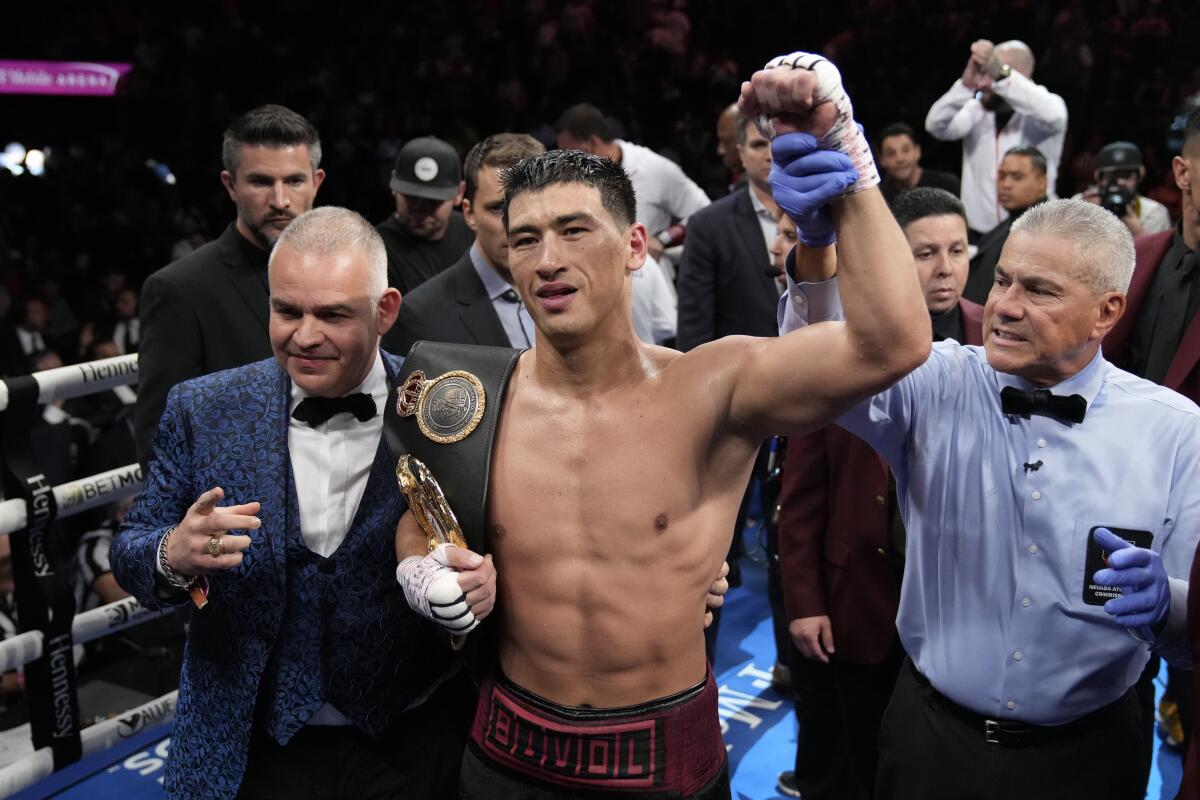
At 6 feet, Bivol had a 4½-inch height advantage over Álvarez. Bivol didn’t shake every time his arms were hit, as some of Álvarez’s lesser opponents had. Bivol was certainly more resilient than Kovalev, who was a spiritually broken fighter by the time he shared a ring with Álvarez.
Bivol gradually gained confidence over the fight. He pawed with his jab in the first couple of rounds but started throwing the punch with greater force and following it with straight rights. By the middle of the fight, Bivol was unleashing three or four punches at a time and backing up Álvarez.
“I very much felt his weight,” Álvarez said in Spanish.
Álvarez looked as if he didn’t know what to do. His face reddened more every round. The fight was a violent reminder of why weight classes exist. Álvarez said he wasn’t exempt from the certain realities.
Or did he?
While saying he accepted the judges’ verdict and was gracious in defeat, Álvarez insisted he won the fight.
“Personally, I think he won four, five rounds, max,” Álvarez said.
More delusion.
Álvarez said he was proud to have stepped out of his comfort zone by moving up from his preferred 168-pound weight class.
“I think that’s what everyone wants, no?” Alvarez said. “It’s not, ‘We all know who’s going to win.’ I’m a person who looks for challenges that are 50-50.”
Except this wasn’t a 50-50 fight. This was a miscalculation.
Álvarez had zero chance of winning. He called for a rematch but won’t have a chance of winning that either. Bivol is too big, too strong and too fast.
The safer move for Álvarez will be to move on from Bivol, move back down to 168 pounds and take on Golovkin for a third time, especially since Golovkin is 40.
Canelo Álvarez offered two possibilities he sees himself doing after becoming the undisputed champion at super middleweight and light heavyweight.
Meanwhile, Bivol was as level-headed after the fight as he was during it. Asked if beating Álvarez made him pound-for-pound the No. 1 fighter in the world, Bivol replied, “To be honest, no. He was a super middleweight.”
Which is right. Bivol beat up a smaller man. He had the perspective to recognize that.
But win a few more major fights, take down a couple more name opponents and Bivol could start believing his own hype, as Álvarez did. Most fighters in that position do.
And that’s when Bivol could end up looking in the mirror at a cinnamon-colored mask. Red means stop, but when the stop sign appears in boxing, it’s usually too late.
More to Read
Go beyond the scoreboard
Get the latest on L.A.'s teams in the daily Sports Report newsletter.
You may occasionally receive promotional content from the Los Angeles Times.

